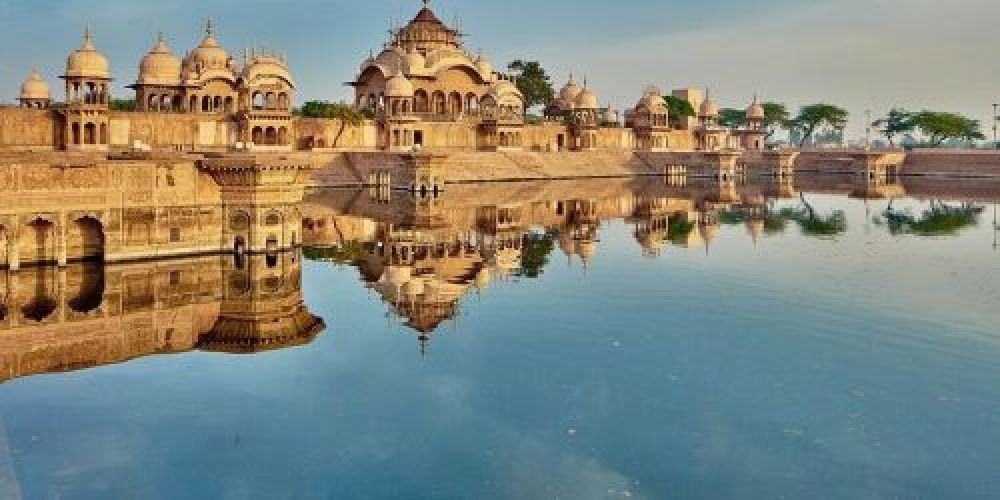

Vrindavan, a holy town in Uttar Pradesh, India, is steeped in rich cultural history and religious significance, drawing pilgrims and tourists from across the globe. The town, synonymous with the playful childhood of Lord Krishna, has been a pivotal religious destination for centuries.
Believed to be an ancient city, its significance is depicted in Hindu texts like the Mahabharata, Bhagavata Purana, and the Ramayana. Historically, Vrindavan's prominence rose as a center of bhakti culture around the 16th century, when saint poets like Surdas, Mirabai, and Rupa Goswami chronicled Lord Krishna's life and spread his devotional teachings.
During the Mughal era, under the patronage of Akbar, the construction of beautiful temples began, further cementing Vrindavan as a key spiritual destination. The Govind Dev Ji Temple is one of the earliest structures from this period. As the town flourished, so did its reputation as a religious hub, drawing in visitors to witness its annual festivities and immerse in its divine aura.
Tourism in Vrindavan saw a significant transformation with the advent of modern transportation facilities. The establishment of a stronger network of roads and the development of rail and bus connectivity in the 20th century made Vrindavan more accessible, thereby facilitating a steady increase in the number of visitors.
Recent years have witnessed a fresh resurgence in Vrindavan's popularity, thanks to the concerted efforts of the government and private stakeholders in promoting the 'Braj Circuit', of which Vrindavan is a key part. Innovations in hospitality, with the rise of hotels, guesthouses, and eateries catering to a range of budgets and tastes, have made stays more comfortable and inviting for tourists.
Acknowledging the sacred status and rich cultural heritage of Vrindavan, current tourism trends emphasize sustainability and the preservation of traditional art forms, architecture, and practices. Efforts are being made to balance the town's spiritual ethos with the amenities expected by contemporary travelers.
Vrindavan is particularly known for its vibrant celebrations of festivals like Holi and Janmashtami, which depict scenes from Krishna's life, attracting tourists in large numbers. The spectacular events, coupled with the local customs, crafts, and cuisine, offer an unforgettable experience, contributing to the thriving tourism industry.
The future of tourism in Vrindavan appears promising, as plans for improving infrastructure, such as the Mathura-Vrindavan development project, which aims at enhancing the cultural landscape while facilitating better amenities for pilgrims, are underway. The commitment to sustaining Vrindavan's mystical charm while catering to the ever-growing number of visitors spells a bright future for tourism in this time-honored town.
Vrindavan's allure as a spiritual sanctuary endures, its history of tourism mirroring the town's constant dance between the ancient and the contemporary. As a living testament to India's profound spiritual legacy, Vrindavan continues to welcome visitors with open arms, offering a glimpse into the divine love that permeates its every corner.